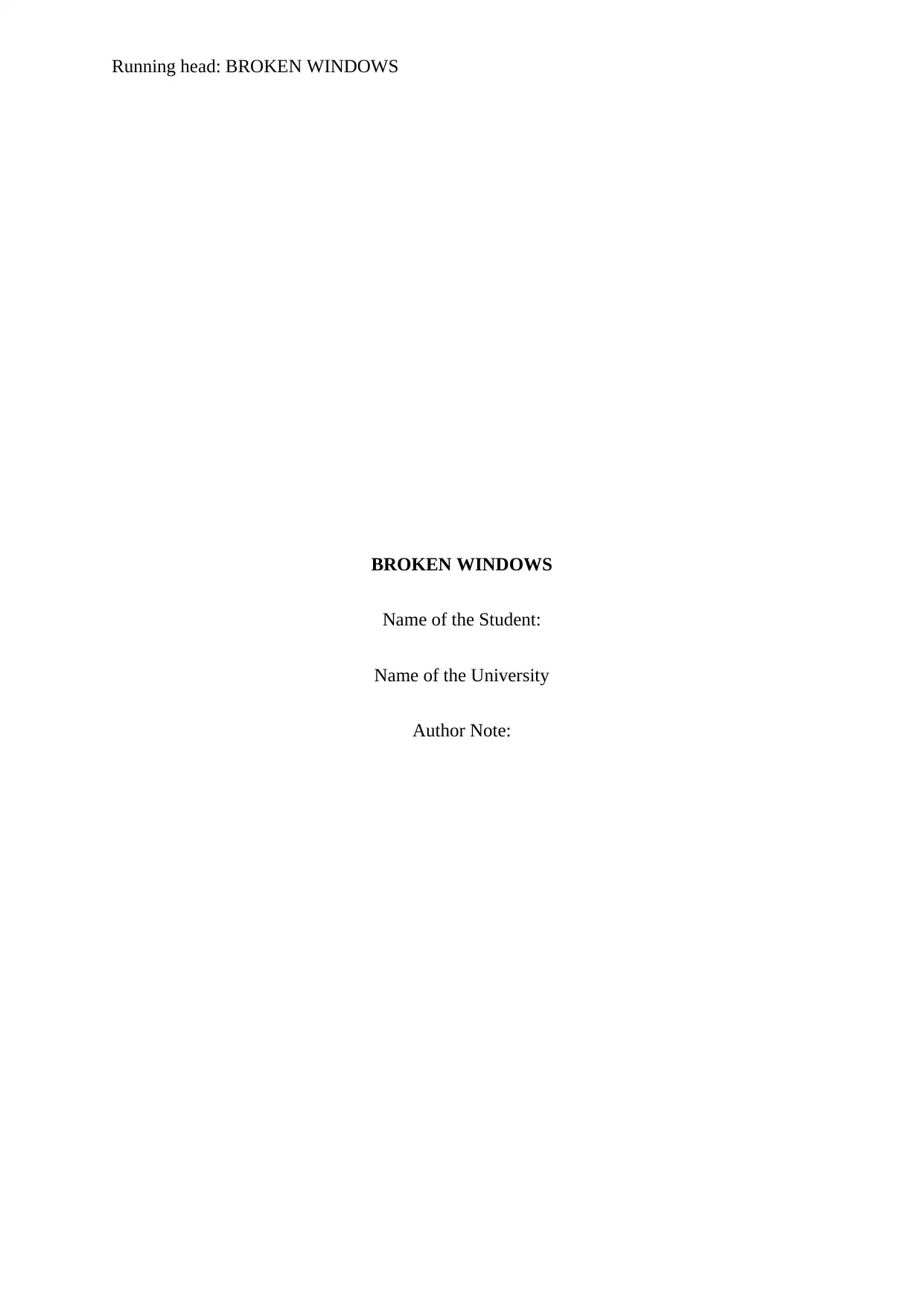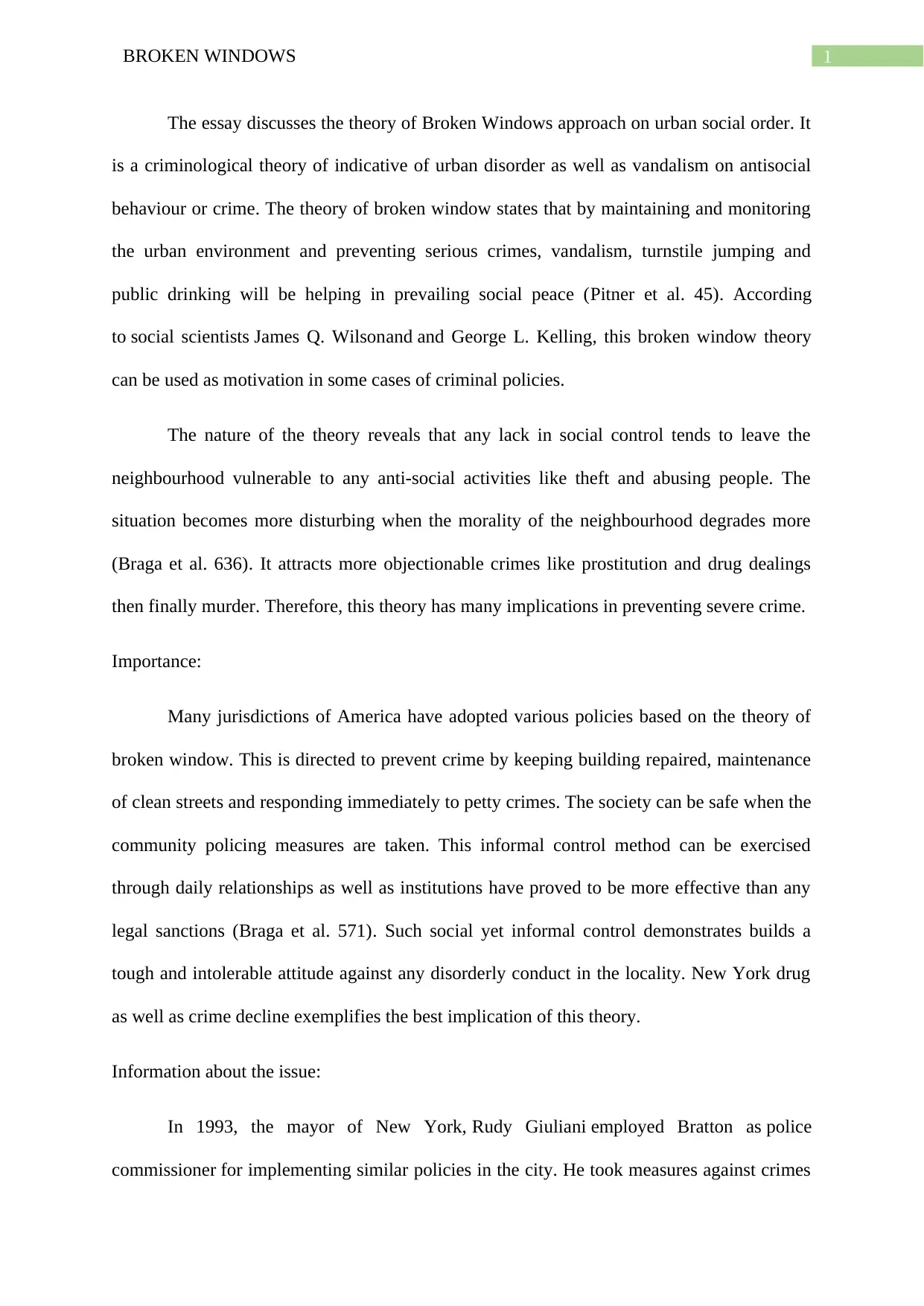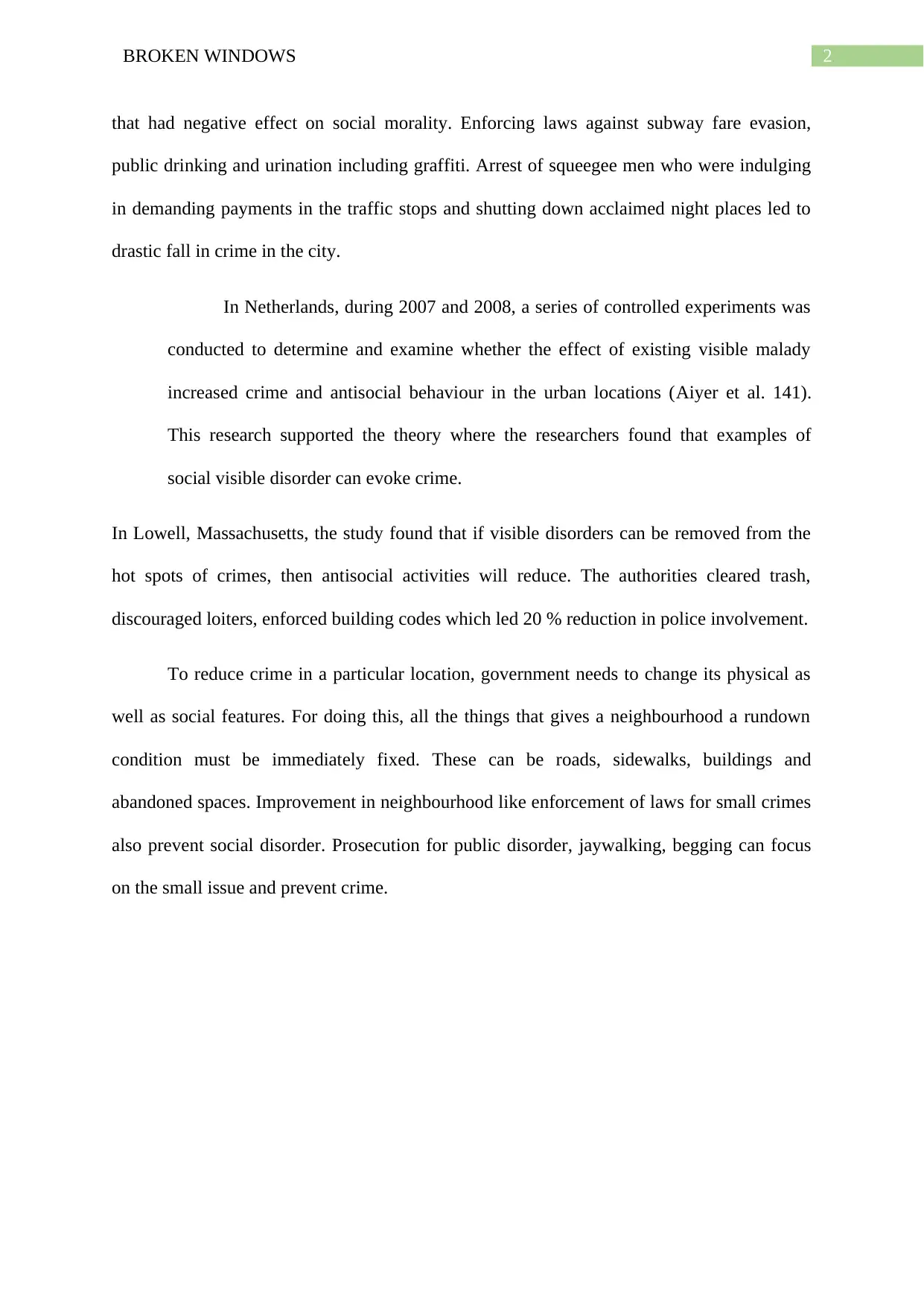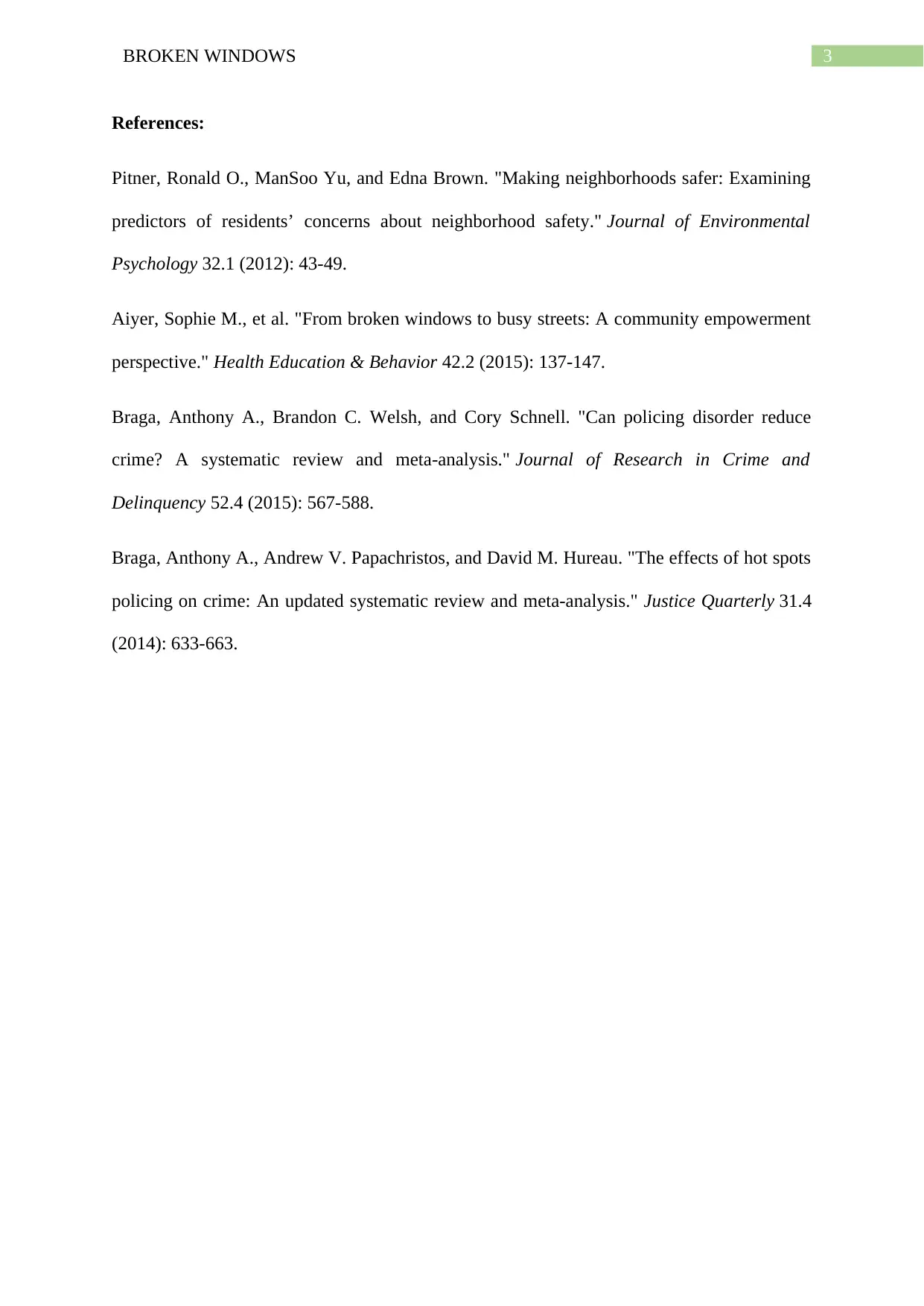The Broken Windows Theory: A Criminological Perspective Essay
VerifiedAdded on 2020/04/13
|4
|760
|57
Essay
AI Summary
This essay explores the Broken Windows theory, a criminological perspective on urban social order and crime prevention. The theory posits that maintaining and monitoring the urban environment, addressing minor offenses like vandalism and public drinking, can prevent more serious crimes. The essay discusses the theory's importance, highlighting how policies based on it have been adopted in various jurisdictions, including New York City. It examines the implementation of such policies, the impact of visible disorders on crime rates, and the role of community policing. The essay references studies and experiments that support the theory, emphasizing the need for physical and social improvements in neighborhoods to reduce crime. It also includes references from sources such as Pitner, Aiyer, and Braga to support its arguments.
1 out of 4









![[object Object]](/_next/static/media/star-bottom.7253800d.svg)